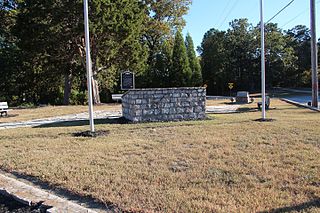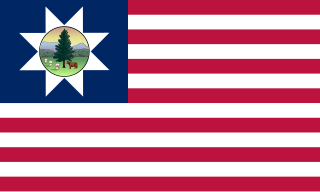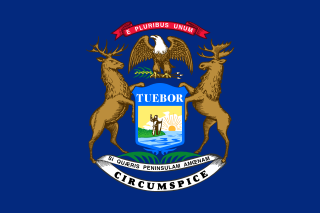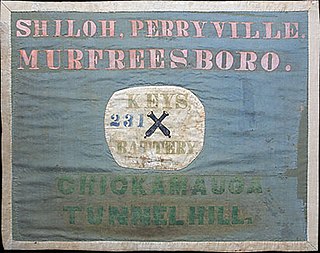
The Battle of Atlanta took place during the Atlanta Campaign of the American Civil War on July 22, 1864, just southeast of Atlanta, Georgia. Continuing their summer campaign to seize the important rail and supply hub of Atlanta, Union forces commanded by William Tecumseh Sherman overwhelmed and defeated Confederate forces defending the city under John Bell Hood. Union Major General James B. McPherson was killed during the battle, the second-highest-ranking Union officer killed in action during the war. Despite the implication of finality in its name, the battle occurred midway through the Atlanta campaign, and the city did not fall until September 2, 1864, after a Union siege and various attempts to seize railroads and supply lines leading to Atlanta. After taking the city, Sherman's troops headed south-southeastward toward Milledgeville, the state capital, and on to Savannah with the March to the Sea.

The Battle of Resaca, from May 13 to 15, 1864, formed part of the Atlanta Campaign during the American Civil War, when a Union force under William Tecumseh Sherman engaged the Confederate Army of Tennessee led by Joseph E. Johnston. The battle was fought in Gordon and Whitfield Counties, Georgia, and is generally viewed as inconclusive.

The Battle of Peachtree Creek was fought in Georgia on July 20, 1864, as part of the Atlanta Campaign in the American Civil War. It was the first major attack by Lt. Gen. John Bell Hood since taking command of the Confederate Army of Tennessee. The attack was against Maj. Gen. William T. Sherman's Union army, which was perched on the doorstep of Atlanta. The main armies in the conflict were the Union Army of the Cumberland, commanded by Maj. Gen. George Henry Thomas and two corps of the Confederate Army of Tennessee.

The Battle of Cloyd's Mountain occurred in Pulaski County, Virginia, on May 9, 1864, during the American Civil War. The fight has also been called the Battle of Cloyd's Farm. A Union Army division led by Brigadier General George Crook defeated a Confederate Army consisting of three regiments, one battalion, and Confederate Home Guard. The Confederate force was led by Brigadier General Albert G. Jenkins and Colonel John McCausland. Although the intense fighting portion of this battle may have lasted for only one hour, it was southwestern Virginia's largest fight of the Civil War.

The Battle of New Hope Church was a clash between the Union Army under Major General William T. Sherman and the Confederate Army of Tennessee led by General Joseph E. Johnston during the Atlanta Campaign of the American Civil War. Sherman broke loose from his railroad supply line in a large-scale sweep in an attempt to force Johnston's army to retreat from its strong position south of the Etowah River. Sherman hoped that he had outmaneuvered his opponent, but Johnston rapidly shifted his army to the southwest. When the Union XX Corps under Major General Joseph Hooker tried to force its way through the Confederate lines at New Hope Church, its soldiers were stopped with heavy losses.
The Second Battle of Dalton was fought August 14–15, 1864, between Union and Confederate forces in Whitfield County northern Georgia.

James Dearing was a Confederate States Army officer during the American Civil War who served in the artillery and cavalry. Dearing entered West Point in 1858 and resigned on April 22, 1861, when Virginia seceded from the Union. Dearing was mortally wounded at the Battle of High Bridge during the Appomattox Campaign of 1865, making him one of the last officers to die in the war. Despite serving as a commander of a cavalry brigade and using the grade of brigadier general after he was nominated to that grade by Confederate President Jefferson Davis, Dearing did not officially achieve the grade of brigadier general because the Confederate Senate did not approve his nomination. His actual permanent grade was colonel.

The 3rd Vermont Infantry Regiment was a three-years infantry regiment in the Union Army during the American Civil War. It served in the eastern theater, predominantly in the VI Corps, Army of the Potomac, from July 1861 to July 1865. It was a member of the Vermont Brigade.

The 4th Vermont Infantry Regiment was a three year' infantry regiment in the Union Army during the American Civil War. It served in the Eastern Theater, predominantly in the VI Corps, Army of the Potomac, from September 1861 to July 1865. It was a member of the Vermont Brigade.

The 1st Michigan Sharpshooters Regiment was an infantry regiment that served in the Union Army's Army of the Potomac during the American Civil War.

The Battle of Bentonville was fought in Johnston County, North Carolina, near the village of Bentonville, as part of the Western Theater of the American Civil War. It was the last battle between the western field armies of William T. Sherman and Joseph E. Johnston.
The 83rd Indiana Infantry Regiment, sometimes called 83rd Indiana Volunteer Infantry Regiment, was an infantry regiment that served in the Union Army during the American Civil War.

The 25th Arkansas Infantry was an infantry regiment of the Confederate States Army during the American Civil War. The unit was originally organized as Turnbull's 11th Arkansas Infantry Battalion. Upon being increased by the required number of companies the battalion was organized as the 30th Arkansas Infantry Regiment but was later redesignated as the 25th Arkansas Infantry. There were two regiments officially designated as the 30th Arkansas Infantry. The other "30th Arkansas" served west of the Mississippi River, in the Department of the Trans-Mississippi and was also known as 5th Trans-Mississippi Regiment or the 39th Arkansas or Rogan's Arkansas Cavalry during Price's 1864 Missouri Expedition.

The Bull Run campaign, also known as the Manassas campaign, was a series of military engagements in the Eastern Theater of the American Civil War in 1861.

The Helena Artillery (1861–1865) was a Confederate Army artillery battery during the American Civil War. The unit was known by several other designations during the war including Clarkson's Battery, Company A, Shoup's Artillery Battalion, Calvert's Battery, and Key's Battery. The unit was occasionally assigned to artillery battalions from other states, so the Arkansas unit was at various times designated as Company C, 20th Alabama Light Artillery Battalion and later as Company H, 28th Georgia Artillery Battalion.
The Battle of Camp Davies was a skirmish during the American Civil War on November 22, 1863, near a Union Army camp about six miles south of Corinth, Mississippi. A 70-man detachment of the 1st Regiment Alabama Cavalry (Union), commanded by Major Francis L. Cramer, drove off a 150-man Confederate force of the 16th Battalion, Mississippi Cavalry State Troops, commanded by Major Thomas W. Ham, and killed at least 4 Confederate soldiers, while suffering two severely wounded troopers. This action is the only engagement recorded as occurring at or near Camp Davies in major sources on American Civil War battles. Other similar engagements in the vicinity of Corinth in 1863 may have occurred near Camp Davies.
Harris's Missouri Battery was an artillery battery that served in the Confederate States Army during the American Civil War. The battery was organized in early 1864 when the 13th Missouri Light Battery was reorganized in a process that may not have been officially approved; Captain Samuel Stanhope Harris commanded the new unit. The battery fought in the Camden Expedition in early 1864, seeing action in the Battle of Prairie D'Ane and the Battle of Poison Spring in April. In June, the battery was present at the Battle of Ditch Bayou. Harris's Battery accompanied Sterling Price during his raid into Missouri in late 1864, during which it fought at the battles of Pilot Knob, Glasgow, Little Blue River, Big Blue River, and Mine Creek, as well as several smaller skirmishes. At Mine Creek, the battery's cannons were captured. On May 26, 1865, the battery surrendered; the men of the battery were paroled.

John Gordon Coltart was a Confederate States Army officer who held regiment, brigade and division command during the American Civil War.

The 23rd Virginia Infantry Battalion, often called "Derrick's Battalion", was an infantry battalion in the Confederate Army during the American Civil War. It fought mostly in western Virginia and the Shenandoah Valley, and was usually part of a brigade commanded by John Echols or George S. Patton. By 1864, the brigade was usually part of a division commanded by Major General John C. Breckinridge or Brigadier General Gabriel C. Wharton.
The 2nd Mississippi Cavalry Regiment was a unit of the Confederate States Army from Mississippi. Formed in the spring of 1862, the 2nd Cavalry took part in many battles of the western theater in Mississippi, Alabama, Georgia, and Tennessee before surrendering in April 1865.














